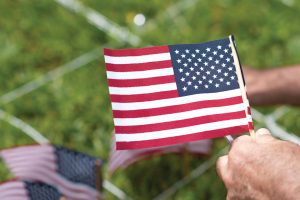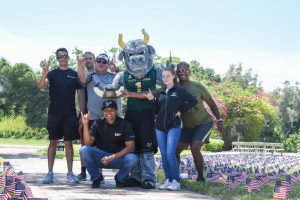Research Roundups
A Snapshot of Student Research
Jessica Skinner
Biology undergraduate Jessica Skinner’s research could one day result in new and innovative ways to control one of Florida’s most problematic pests.
In her project “The Bugs Inside the Bug: Uncovering Potential Symbionts of Mosquitos” – Skinner noted that while mosquitos are intensely studied as vectors of disease-causing pathogens, less is known about the microbes inside them. Those bacteria could be exploited as an effective strategy to control mosquito populations, Skinner said.
SUBSCRIBE TO
Research: USF Sarasota-Manatee Campus
Subscribe to our digital Research Magazine and full access to online content and e-Alerts
Skinner, a USF Sarasota-Manatee junior, spent two years working with biology Assistant Professor Aparna Telang, fellow students Alexander McClure and Susie Bennet and graduate Robert Nemitz comparing the microbial diversity between lab-raised and wild southern house mosquitoes, Culex quinquefasciatus (Cuq), to identify bacterial mutualists.
The short-term goal of this research is to survey microbiota within major tissues of Cuq and develop an understanding of which, if any, have potential to serve as mutualists or symbionts. The project is being reviewed by The Journal of Medical Entomology.
“There is an undeniable link between blood-feeding arthropods, like mosquitos, and the health of both domestic animals and wildlife,” Skinner said.
That love of animals isn’t limited to insects, Skinner said, who works part-time at a veterinary hospital and said her passion is working with a pitbull rescue organization.
“It is rewarding to work with that breed in particular, as they often get a bad rap,” she said. “Changing people’s minds is always rewarding.”
Ashley Wichern & Rissa Fleenor
What makes someone leave his or her homeland to become part of an extremist group in another country? In their research project, “The Phenomenon of Foreign Fighting Revisited: How Motivations for Foreign Fighting Changed,” USF Sarasota-Manatee undergraduate Ashley Wichern and graduate student Rissa Fleenor analyzed the words of actual terrorists to try to find the answer.
“We were driven by the curiosity of what drives people to participate in foreign fighting,” said Wichern, a senior majoring in criminology. “It also is a very relevant topic in today’s climate, with the ongoing issues pertaining to ISIS.”
Beginning in 2016, the pair analyzed 89 interviews with foreign fighters captured at the border of Turkey and Syria, conducted in part by their academic advisor Murat Haner during his time as an undercover counterterrorism officer in 2015. Haner is a research administration faculty fellow and instructor in criminology.
Months of research revealed the decision to engage in foreign fighting was influenced by five key elements: peer pressure from religious networks, socialization with existing fighters, low levels of risk associated with travel, favorable life conditions compared to previous jihad locations and the opportunity to exact revenge.
“One of the most important findings was that motivations vary by their country of origin,” said Fleenor, who is pursuing her masters in criminal justice.
As a result of their project, Fleenor and Wichern were the first undergraduate researchers in USF Sarasota-Manatee campus’s history to present at the American Society of Criminology’s conference last fall in Philadelphia. The study has been accepted for publication in a top-tier research journal in U.K., Terrorism & Political Violence.
Daniel Slabaugh
In 2017, the Centers for Disease Control and Prevention declared antibiotic resistance “one of the world’s most pressing public health problems.” That same year, USF Sarasota-Manatee senior Daniel Slabaugh turned to plants and animals found in Floridians’ backyards to identity potentially life-saving solutions.
For his Honors Program thesis, “Native Florida Medicinal Plants,” Slabaugh spent three months measuring how much different common plants inhibited bacterial growth. Those tested were Rosa damascena (Damask rose), Spinacia oleracea (common spinach), Vigna luteola (hairy cowpea) petal, Vigna luteola (hairy cowpea) leaf, Cuscuta pentagona (dodder vine), Cladonia rangiferina (reindeer lichen), Koelreuteria paniculata (golden raintree seeds) and Oncopeltus fasciatus (milkweed bug).
Only the reindeer lichen plant and milkweek bugs showed positive results in killing bacteria. While more testing will be required, Slabaugh is optimistic his research could be an important first step.
“Ultimately, I would love to see a new antibiotic come on the market as a result of this study,” Slabaugh said. “A more realistic outcome would be that researchers will know what plants hold promise and which should be ignored.”
Slabaugh was inspired to embark on this topic by two undergraduate courses taught by his mentor on this project, organic chemistry instructor Edie Banner.
“I was fascinated learning the mechanism behind antibiotics and antibiotic resistance, natural compounds, how they become pharmaceuticals and how researchers are currently isolating new antibiotic compounds,” Slabaugh said. “Writing a thesis was the perfect excuse to not only research those topics but also partake in it.”



